Dr. Jonda C. McNair brings valued experience and perspective to topics that are fundamental to Collaborative Classroom. A professor of literacy education at Clemson University in South Carolina, Dr. McNair specializes in children’s literature with an emphasis on books written by and about African Americans. She is also a former primary grade teacher and served as the Chair of the Coretta Scott King Book Awards Committee from 2012 to 2015.
Dr. McNair and Collaborative Classroom share a commitment to the transformative power of reading education, children’s literature, and diversity, and we explored these topics in this conversation.
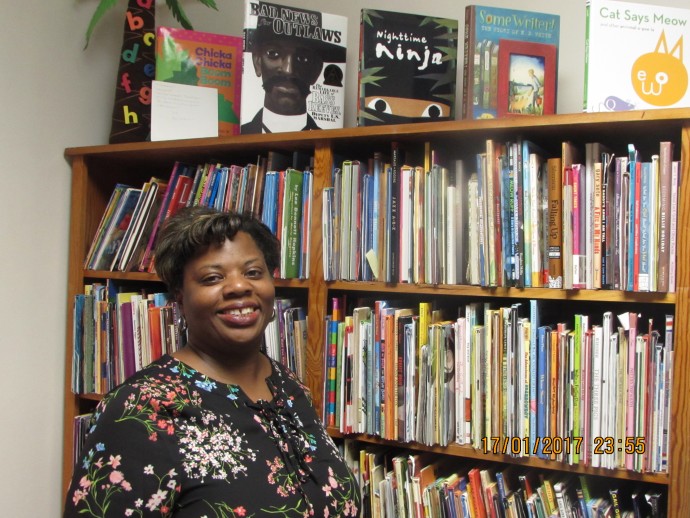
CC: You have written dozens of articles, one book, four book chapters, and many reviews and scholarly papers. You produce a children’s literature newsletter, have developed literacy and diversity projects, serve on boards, chair committees, and have given over 60 presentations both nationally and internationally. This is in addition to teaching at Clemson University. There’s much for us to talk about. But first I’d like to go back to the beginning. So much of who we are as adults is rooted in our childhood experiences. Could you tell me a little bit about your earliest years, such as how you learned to read? What were your favorite books?
Jonda C. McNair: My mother tells me I struggled with reading in second grade, though I don’t remember this. I do remember that she always bought books for my sister and me at Christmas and took us to the library for summer reading programs. I was a big fan of the Little House books by Laura Ingalls Wilder and another series that I liked was The Boxcar Children. Encyclopedia Brown was one of my favorites too, and still holds a lot of fond memories. Those are three books, series actually, that really stood out for me,I’m glad I don’t remember struggling with reading. It’s kind of funny that I did, considering that I went on to be a teacher, and to get my PhD so I could learn more about how to teach children to read.
I do recognize how complex a job teaching is; it’s not to be taken lightly.
CC: Maybe those early experiences helped you to become a better teacher and motivated you to become involved in literacy on many levels.
McNair: I do recognize how complex a job teaching is; it’s not to be taken lightly. A lot of teachers struggle with how to teach children to be good readers.
CC: Did you have a teacher or other adult who was a great influence on you when you were young?
McNair: Aside from my mama—she’s always been my rock and very supportive—I would have to say, Sister Scott. She invited me to be her assistant, teaching the little children at our church in Macon, Georgia, my hometown. I think it was something about having the opportunity to work under her and be nurtured that laid the groundwork for actually becoming a teacher. She had a big influence on me. I tell her that to this day.
CC: What were some of your challenges when you were in the elementary school classroom?
McNair: One of the challenges for me, which is something I referenced earlier, was just how difficult it is to be a good teacher of reading. I wondered what to do with some of the children who really struggled, and I recognized that sometimes it wasn’t so much them, but rather something that I wasn’t doing. I made it a point to try to read articles, from magazines like The Reading Teacher, by teacher practitioners who were good at their craft and could write in ways that were accessible to me. So, one challenge was just what to do to become a better teacher of reading. That’s one of the reasons I ended up going off to Ohio State.
I have to mention, there is somebody else who was an influential person in my life. When I went to the University of Florida, my children’s literature professor was named Linda Leonard Lamme. She inspired me and introduced me to books like Uncle Jed’s Barbershop. 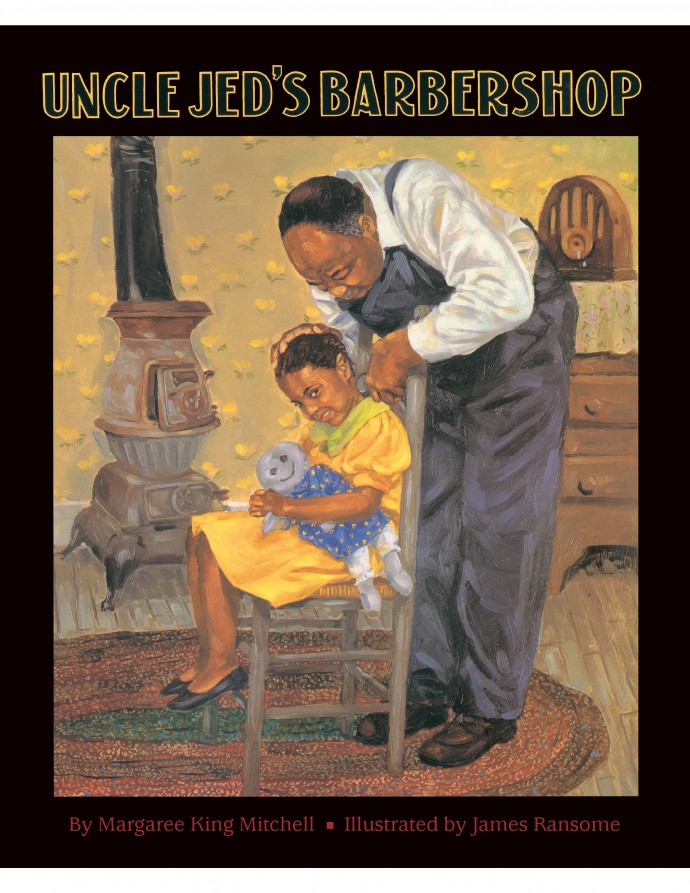 She was the one who said, “I think you should work on your PhD, you should go to Ohio State because they have a good children’s literature program, and you could work with a woman named Rudine Sims Bishop.”
She was the one who said, “I think you should work on your PhD, you should go to Ohio State because they have a good children’s literature program, and you could work with a woman named Rudine Sims Bishop.”
When I started looking at Ohio State I saw that not only did they have a strong children’s literature program, but they also had this awesome early literacy program with faculty like Gay Su Pinnell. When you’re looking at doctoral programs as a rookie you don’t always know which ones are well-known for certain areas of study. Dr. Lamme knew, and she pointed me in that direction.
CC: In light of what you were saying about how difficult it can be to figure out how to be the most effective teacher, do you have any thoughts after reviewing our reading comprehension program materials?
McNair: I did take a look at the teacher’s manuals that you sent me recently. I actually think those are the kinds of materials that would have helped me to focus specifically on comprehension strategies, such as monitoring and visualizing, when I taught reading. They would have supported me. I’m embarrassed to say it, but I did Round Robin Reading. Now, I also did a lot of innovative things with the literature-I shared poems, readings, books-but I felt I could do better.
CC: What were some of the specific things you were doing with literature?
McNair: I had what I called an author/illustrator study every week. I posted a picture of the featured author on a bulletin board in the classroom, along with a biography. On Mondays, I would introduce the person that the students would be learning about that week. I’d share some things about them, where they grew up, little facts. For example, Don Wood and Audrey Wood worked together and I read that they had a doodle pad next to the phone and one of them would talk on the phone and doodle and then the other would talk on the phone and doodle and they would kind of go back and forth with their work that way. I would just share things like that.
I would just share things like that.
Back then we didn’t have dry erase boards, or they were just easing them in, so I would write up on the board, “Our author and illustrator of the week are Don and Audrey Wood and here are some of their books.” I lined the chalkboard ledge with 10 or 15 books by the Woods and would make sure to read at least one or two of them during read-aloud time. We studied authors and illustrators such as Donald Crews, Dav Pilkey, Floyd Cooper, and Patricia Polacco.
CC: That is a wonderful immersion into the world of authors, their lives, and their work.
McNair: It’s interesting how the kids would relate to the authors and illustrators and want to know about them. I remember the librarian said that whenever she was reading to my students they would always say, “Well, who wrote it?”At the end of the year, one student brought me a coffee mug; her mama said, “my daughter said you would like this coffee mug because the art on it reminds her of Eric Carle.”
And then another student was reading aloud to me from one of the books by Marc Brown. Interestingly, instead of reading from the story, he read the back page where it talks about the author and where he lives. I thought, well, he recognizes that’s important, too.You never know what kids will do.
One student took the initiative and actually emailed Robert Munsch. Munsch emailed her back! She brought in a copy of the email for show and tell. Her name was Hannah, and Robert Munsch told her how much he liked her name because it was spelled the same way forward and backward.
I loved to teach poetry too. We had poetry notebooks in which I would collect poems for the students. One I shared was Emily Dickinson’s “A Word”: “A word is dead, some say, when they say it, but I say it just begins to live that day.” And so, we would talk about how some books that we love so much have certain phrases like “chick-a-chick-a-boom-boom” that we like to say. How the words came alive once we said them; they weren’t dead. We added one or two poems a week to the notebook, then at times we would all pull them out and read together.
CC: Sounds like you were a pretty incredible teacher of reading.
McNair: When I went to apply for the PhD program at University of Georgia they said, “you know more about reading than you think you do.” But I still can’t believe I’d done Round Robin Reading! At least now I’m in a position where I can talk about some of the major downsides to Round Robin Reading. I ask, “What is the alternative? What are some different things we can do?”
I admit to the students that I’ve made many mistakes. I did Round Robin Reading, or I read The Five Chinese Brothers not thinking about the fact that all five Chinese brothers look exactly alike.I bring that book into class and I’ll say, “look how worn it is, because the children loved it and I did, too.” And I said, “if you look at it from a literary standpoint, I certainly enjoyed it, but if you look at it from a cultural standpoint, it works only because of the stereotype.”
Now, I try to replace this book with others by different people, like Grace Lin or Allen Say. If I’m going to include the work of Asian American authors and illustrators, then I need to make better choices than The Five Chinese Brothers.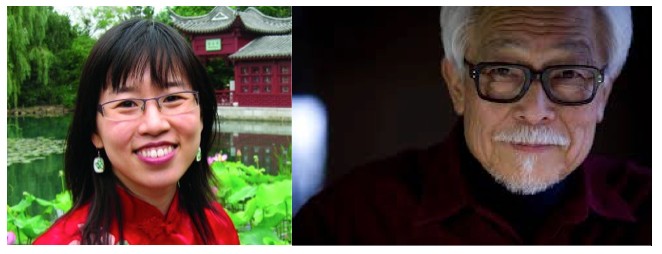
CC: When I interviewed Christopher Paul Curtis, he said, “my sincerest hope is that those who have chosen teaching as a profession know that theirs is one of the few jobs that can actually break or make another human being.” When you were teaching elementary school, what was your greatest hope for the students in your classroom? And now, what is the most important lesson your current students take away from your classroom and into their own?
McNair: I wanted my students to be successful readers and to develop the reading habit. Of course, there were other things that I was concerned about-how they treated one another, being responsible, having a sense of fairness. But I wanted the students to learn how to read and to see it as something that is pleasurable, worthwhile, and that you continue to do moving forward in life. That was very important to me when I was still teaching elementary school.
CC: Now with your college students, what do you hope that they will carry with them out into their own classrooms?
McNair: I want them to be the best teachers of reading they can be. Also, I want to be able to pass on a passion for books and authors. Sometimes I hire a student to keep a running record of all the books that I share in class. I do that for a couple reasons. One, when class is over they have a list of everything that I’ve shared with them, but also for me, it’s a way to review and see where I need to do better.
For example, maybe I haven’t shared a book by a Native American in two weeks. I’m not saying I’m trying to read a book by every person of color in one or two class sessions, but I’m looking at what I’ve read in a month, for example, and I’m trying to include multiple genres. I’m also thinking about being inclusive in terms of religion and disability and race. I share older books, new books, and I’m being critical of myself, because I can always do a better job exposing students to a broader selection of books.
CC: That’s a really valuable quality that you have: you are constantly reevaluating and striving to do better. We always have more to learn and as we were just saying, we inevitably make mistakes, even when we think we’re doing the right thing, maybe especially when we think we’re doing the right thing. Then upon reflection, we see something we’ve overlooked before.
McNair: Yes, for example, when my students have to do a presentation on authors and illustrators, I will say, “no Dr. Seuss, no Eric Carle, we already know about these people.” This is an opportunity for you to push yourself. Not that there isn’t a space for Eric Carle in your library, there is, but I try also to bring in something like From the Bellybutton of the Moon and Other Summer Poems/Del Ombligo de la Luna y Otros Poemas de Verano by Francisco X. Alarcón in English and Spanish. Now it’s been around for a long time, but most of my students have never seen that book.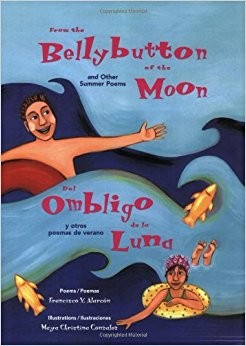
CC: Your hopes for students young and old have been similar: for your youngest, to build a lifelong habit of reading, and for your college students, to be the best possible teachers of reading and also to maintain or renew their own passion for reading.
McNair: Love for reading, yes, and to make sure, too, that they are really sensitive to having diverse collections of children’s books-diversity in terms of genre, race, class, culture.
CC: Collaborative Classroom’s vision for teaching and learning has been consistent since its inception in 1980; integrated social and academic learning is at the core of our curriculum. Students and teachers respond to and support the development of every single individual in the classroom community through intentional norm-setting, through the analysis of authentic and diverse literature, and through thoughtful discussion between students. I wonder if you could talk a little bit about what it means when children find their lives reflected in the literature in the classroom and what happens when they don’t.
McNair: I definitely think it affects them on some level whether they are conscious of it or not. Even though all my favorite books as a child were about white characters, as a young reader I was not conscious of the fact that I wasn’t seeing myself. However, I have to recognize that on some level I was affected by that. It’s tricky: as much as I write and do research on this subject, I’ve always grappled with the question of how you can measure the effect of not recognizing yourself in literature.
I like to give an example of what can happen when you do see yourself reflected. I watched a television program focusing on a murder mystery that was set in my hometown, Macon, GA, and when I watched that program I sat up straighter and paid more attention. I tried to find the places depicted in the scenes that I had been to or that I was familiar with. I called home and asked my mama for background information about the mystery. That’s the kind of thing that happens when you can relate on a personal level. So, I do think it’s important to be able to see yourself and be able to connect in some way.
That said, it can be hard to know what kids will relate to. A colleague of mine named Wanda Brooks has done research where she’s shared Virginia Hamilton’s work with African American students and they didn’t necessarily connect. I think the book was The House of Dies Drear. Wanda wasn’t sure if it was because the students didn’t know much about that particular genre (mystery) or if it was the historical background of the area, but she just found that they had a difficult time relating, even though Virginia Hamilton was black, the characters were black, and the students were black.
So, it’s not always easy to try to find that match, but I do believe if we really think about class and race and gender and disability and keep those things at the forefront when we’re choosing books, we are going to make those kinds of connections and help children relate to books.
CC: There are so many aspects of identity.
McNair: Yes, so if you offer a very wide variety of books, it’s good for all the students.
CC: Something that I try to emphasize when we’re talking about diversity in our literature is that we are trying to provide both mirrors and windows, as Rudine Sims Bishop said. We need both for all kids. White children have had a lot of mirrors. Students benefit from more windows into all kinds of life-race and ethnicity, but also family structure, gender, sexuality, etc.
McNair: That’s right, and I say to my students, “if you enjoy good literature, you have to recognize when it comes to talent, that it crosses all racial, class boundaries.” People have talent no matter what their identities are.
CC: You never want to suggest that we cannot relate to different kinds of people. It’s a question of balance.
McNair: It is important to be able to connect to a story that’s not necessarily about my experience, but I think we want to make it where it’s not always about the other. Sure, you can connect because of your race or your class or your disability, but then sometimes you might want to read about somebody totally unlike you and still be able to connect, at least on a human level, in some way.
People have talent no matter what their identities are.
CC: This is a dynamic time in the world of children’s publishing. The current conversation about the need for equitable representation in books published for kids seems to be having an effect on the industry. According to the Cooperative Children’s Book Center, 28% of the books published in 2016 were about people of color, compared to 14% in 2014 and only 11% 20 years prior. What’s your assessment of the progress – I know there hasn’t been progress on every front – and how can we build on it?
McNair: My assessment is that there’s still a lot of work to do. I think it’s important to keep pushing. 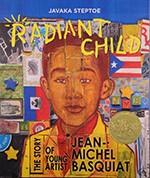 But I have to say, too, that there are several things that have happened recently that make me more hopeful.
But I have to say, too, that there are several things that have happened recently that make me more hopeful.
For example, over the last couple of years at the American Library Association (ALA) conference, I have really been pleased with the inclusiveness of the major awards.I’m not thinking about the race-based awards. Beyond the Pura Belpré and Coretta Scott King awards (which I do think are important and should stay), I’m talking about, for example, the Sibert. I was pleased that Duncan Tonatiuh won the Sibert in 2016, and Javaka Steptoe just won the Caldecott Medal. Christian Robinson won a Caldecott honor and Pam Muñoz Ryan won a Newbery Honor for Echo-an amazing book, I might add. I hope that trend continues.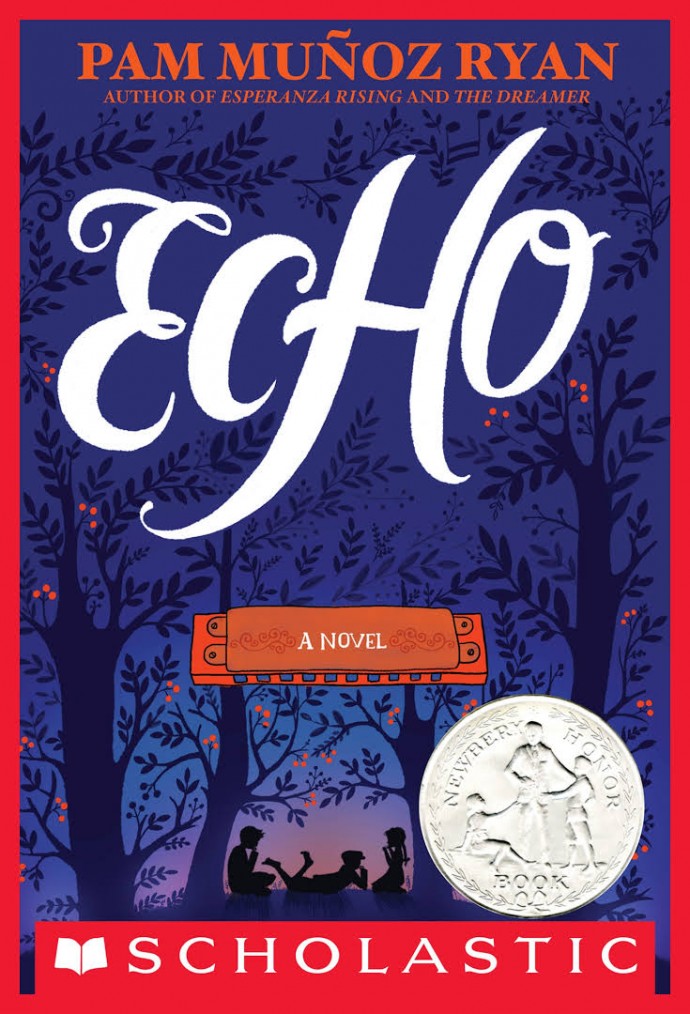
Also, Christopher Myers is now starting an imprint at Random House [called “Make Me a World”]. So, yes, we need improvements in the numbers of books by and about people of color. I also think it’s important to make people aware of what is already available.
Even though it could be better, there is more available than people might think. When I do workshops with teachers or with my students, I’m always surprised at the books that they don’t know about. For example, Everett Anderson’s Goodbye by Lucille Clifton was published in 1983, and is, to me, a classic. The Everett Anderson’s series, unfortunately, is out of print except for that one book; it actually won the Coretta Scott King and was a Reading Rainbow book, so I think those things have probably kept it protected and in print.
CC: Actually that’s going to be another really important phase. If the trend of publishing more books about people of color continues—I know there was an upswing in the 60s and then it tapered off and we were going backward for a long time-but if this one continues, the next phase will be making sure those books stay in print.
McNair: And bringing some of them back; I’d love to see some of those Everett Anderson titles be brought back into print. If publishers feel like books are going to sell, they will buy the rights and bring them back.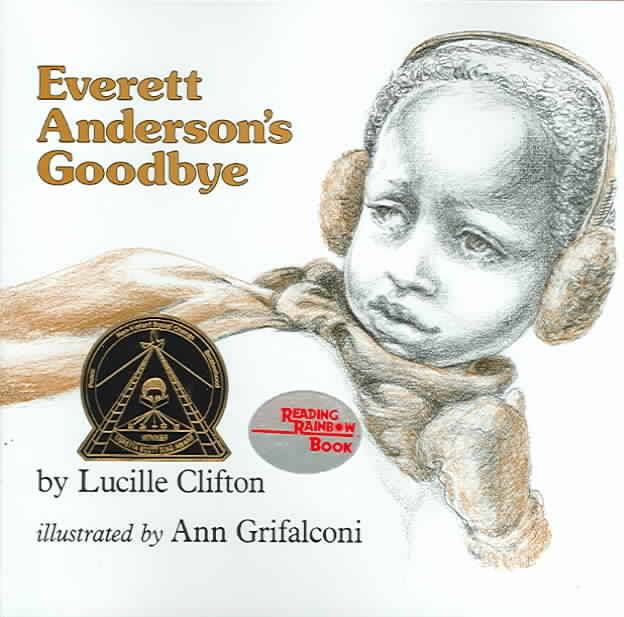
CC: Could you tell us about your family literacy project, I Never Knew There Were So Many Books About Us: Parents and Children Reading African American Children’s Literature Together? Can you also talk about the Call Me Mister initiative?
McNair: At a state reading conference for the International Reading Association in South Carolina, I gave a presentation about recently published and (what I consider to be) classic African American children’s literature (e.g., Flossie and the Fox by Patricia McKissack or Bigmama’s by Donald Crews.). I’ll never forget that after my session was over, there was this black woman who came up to me, a teacher in her 60s, and she said, “I never knew there were so many books about us.” 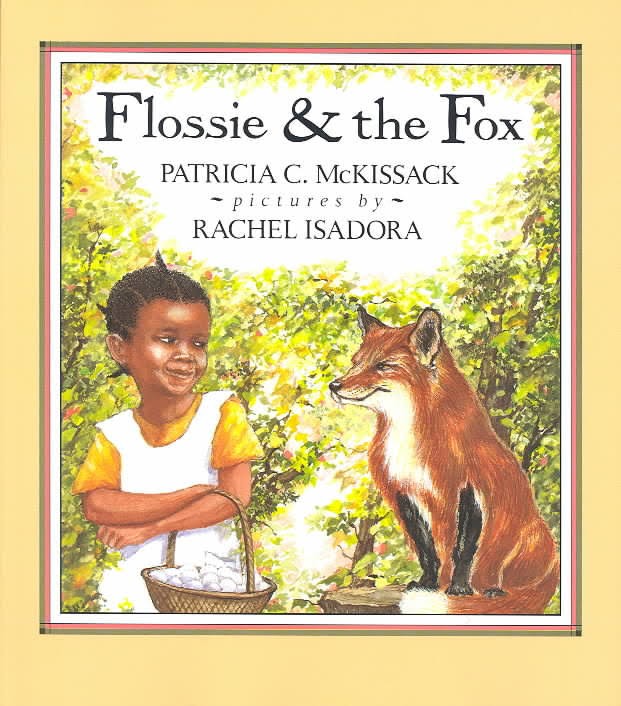 I thought, “you’re a black woman and you’ve been teaching all this time and if you didn’t know about these books, then how would parents know about them?”
I thought, “you’re a black woman and you’ve been teaching all this time and if you didn’t know about these books, then how would parents know about them?”
Of course, parents play an important role in buying books for their children and laying the foundation at home. That’s when I started thinking about ways that I could put African American children’s books into the hands of African American parents. I applied for a grant from the National Council of Teachers of English (NCTE), received about $12,000, and recruited 10 African American families. My purpose was to see what happened when I exposed parents and their kids to all these African American children’s books.
We met once a month. I introduced an author or an illustrator, such as James Ransome, Kadir Nelson, Andrea Davis Pinkney, etc., did a read-aloud (modeling for the parents how I make it interactive), and then had an activity (e.g., children could draw a picture of their favorite part of the story). Each family could pick out anywhere from 10 to 12 African American children’s books. When I was recruiting families, I sent out a message to the Clemson University black faculty listserv, and one of the Call Me Mister workers reached out and said this was something they would like to be involved in.
Call Me Mister is an initiative that was created here in South Carolina. It was a relationship between Clemson University and a number of historically black universities in the state, like Claflin and South Carolina State. The purpose of it was to increase the number of black male teachers in the state of South Carolina, particularly at the elementary level. And it’s not just in South Carolina anymore. It’s done so well that other universities have reached agreements with Clemson to have the program at their institutions as well.
CC: What has happened since then? Has the I Never Knew… program continued in any way?
McNair: It has. Now we do something on a smaller scale. We (my sorority members and I) have a one-day program that lasts for about two to three hours at the public library. We invite all families: interracial families, white families, others, to come if they’re interested in participating. We have a presentation, I give each family 10 books and a bag of goodies like crayons and stickers, and we have refreshments. We’ve been doing that for the past seven or eight years. The word’s gotten around in the community and people really look forward to it.
CC: Could you also tell us about The Brownies’ Book? I confess I had not known about it until I read your book Embracing, Evaluating, and Examining African American Children’s and Young Adult Literature.
McNair: It was one of the first periodicals created primarily for black children. W.E.B. Du Bois created it for what he called the “Children of the Sun.”
Du Bois is one of my heroes: he was brilliant, he wrote so much, and I’m always amazed at the different things that he had a hand in. He created The Brownies’ Book along with Jessie Fauset. She was a Harlem Renaissance novelist and served as literary editor of the magazine. They included people like Nella Larsen, who wrote Passing. “April Rain Song” by Langston Hughes was first published in The Brownies’ Book, if I’m not mistaken.
The magazine didn’t last very long because they were never able to get enough subscribers to keep it afloat. I think that many of the children who got The Brownies’ Book were probably children whose parents subscribed to The Crisis magazine, which is published by the NAACP. Some of the first advertisements about The Brownies’ Book were in that magazine.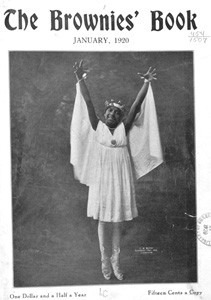
The first issue came out in January 1920 and the last one was published in December 1921. It had a full color cover, even back then, and nice paper. It showcased children’s accomplishments and included biographies of people like Harriet Tubman and Benjamin Banneker. Du Bois set out seven objectives that he wanted the magazine to accomplish. One objective was to make colored children realize that being colored is a normal, beautiful thing. And another was to make them familiar with the history and achievements of the Negro race. And the last one I liked was to make them know that other colored children have grown into useful, famous people.
Those are just three of the seven. I think The Brownies’ Book was important because, in it, W.E.B. Du Bois brilliantly articulated the important themes and ideological messages in African American children’s literature that are still important to people who are creating this body of work.
CC: When you listen to those three guiding principles that you mentioned, they could be the foundation for any teacher trying to make her classroom library more representative. They would be goals for providing mirrors to students of color. What advice do you have for teachers who are trying to ensure that their classroom libraries are culturally responsive?
McNair: I talk to my students about making a firm commitment to move beyond what you know and what you’re comfortable with, and making it a practice to try to educate themselves.
CC: And how can they do that?
McNair: By reading magazines that review children’s literature, such as The Horn Book or The Bulletin (which I like a lot, and comes out of the University of Illinois at Urbana-Champaign). Become knowledgeable about different awards at ALA, like the Sibert, the Pura Belpré, the Coretta Scott King, the American Indian Youth Literature Award. Also, review the ALA Notables list, which is pretty inclusive in the way it’s created.
“I talk to my students about making a firm commitment to move beyond what you know and what you’re comfortable with….”
CC: Those are great suggestions for teachers and for parents. You’ve done valuable research and writing about the role of African American children’s literature in their lives. Could you talk a bit about your predecessors in this arena-Rudine Sims Bishop, of course, but perhaps others who paved the way for you?
McNair: I have to go back to Dr. Lamme, because she’s the person who really turned me onto children’s books. She planted the PhD seed in me and inspired me to do the work that I do. So, I have to thank her. And of course, Dr. Bishop too. If it hadn’t been for Dr. Lamme, I wouldn’t have even known about Dr. Bishop. I owe a huge debt to both of those ladies, I really do.
CC: It’s amazing how a few people can change your whole life. 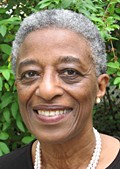
McNair: Yes. A highlight for me at the [2017 Coretta Scott King Award] breakfast was when Dr. Bishop won the Virginia Hamilton Lifetime Achievement Award. She acknowledged me and thanked me as one of her students. It made me feel so good:
“In the quarter century between 1982 and 2007, I continued my scholarly pursuit of the development of African American children’s literature. It was my education students, however, who, as teachers, were actively working with children, and I thank them for engaging, for passing on what we learned together and “paying it forward” in their work with children. As one exemplar, I thank Dr. Jonda McNair, one of my last two doctoral students, former chair of the Coretta Scott King Book Awards Committee, who has taken her work at Ohio State and run with it. Jonda and others like her are having an impact and ensuring that the work will go on.” —Dr. Rudine Sims Bishop, Virginia Hamilton Lifetime Achievement Award acceptance speech, 2017
